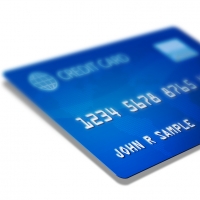EMV—The Next Generation of Credit Card Security

Has your credit card or identity been compromised recently? If not, you are one of the lucky ones. According to the US Department of Justice, approximately 16.6 million people, or 7 percent of all US residents age sixteen or older, were victims of at least one incident of identity theft in 2012.
With increased awareness of the problem's magnitude, the top Payment Card Industry vendors (Visa, MasterCard, American Express, and Discover) are pressuring credit card issuers with a 2015 deadline to replace credit cards with better built-in security. Is the new security technology really good enough to stop fraudulent transactions and regain lost consumer trust?
The change could not come fast enough. The US financial industry has been rather laggard in supporting the newer, more secure credit cards that have long been the norm in Europe. The EMV (Europay, MasterCard, and Visa) cards have an embedded microchip. They are often referred to as chip and pin cards because the holder’s information is stored encrypted on the chip, and the user enters a PIN to authorize purchases. From the user perspective they work a bit like a combination of a debit card and a traditional credit card.
The main driver for the US financial institutions’ previous reluctance to implement better security has been purely cost based. The expense to manufacture and distribute chip-enabled credit cards to millions of card holders will likely cost the vendors three to four times what it costs for the familiar magnetic strip cards.
A few American issuers already have these cards available—the Chase Sapphire Preferred card, the BankAmericard Travel Rewards credit card, and the Barclaycard Arrival Plus World Elite MasterCard are the most common. These cards are handy for globe trotters, but until the millions of point of sale swipe terminals are upgraded, there is little relief in sight.
Although the chip and pin cards will likely cut rampant credit card fraud in the US much as they did in Canada and Britain, they will do nothing to address the online transaction fraud problem. For that, some people are turning to options such as virtual credit card numbers (or single-use credit cards), which offer a layer of protection.
A user creates a unique virtual number and set purchase amount that they use for each online transaction, which is tied back to the holder’s real account. Since it has a limited lifetime and a set spending limit, it reduces the risk of fraud. Not many people are aware of these services and not all banks offer them.
An even more secure option is offered by Abine, the firm behind the popular blocking software DoNotTrackMe. The service, called MaskMe, creates a completely fake credit card with no personally identifiable information, such as the consumer's real name and address.
Sadly, even adding these long overdue security measures will never completely eliminate credit card fraud. The target is far too large and tempting, but consumers will welcome the extra layer of security that these microchips offer.

